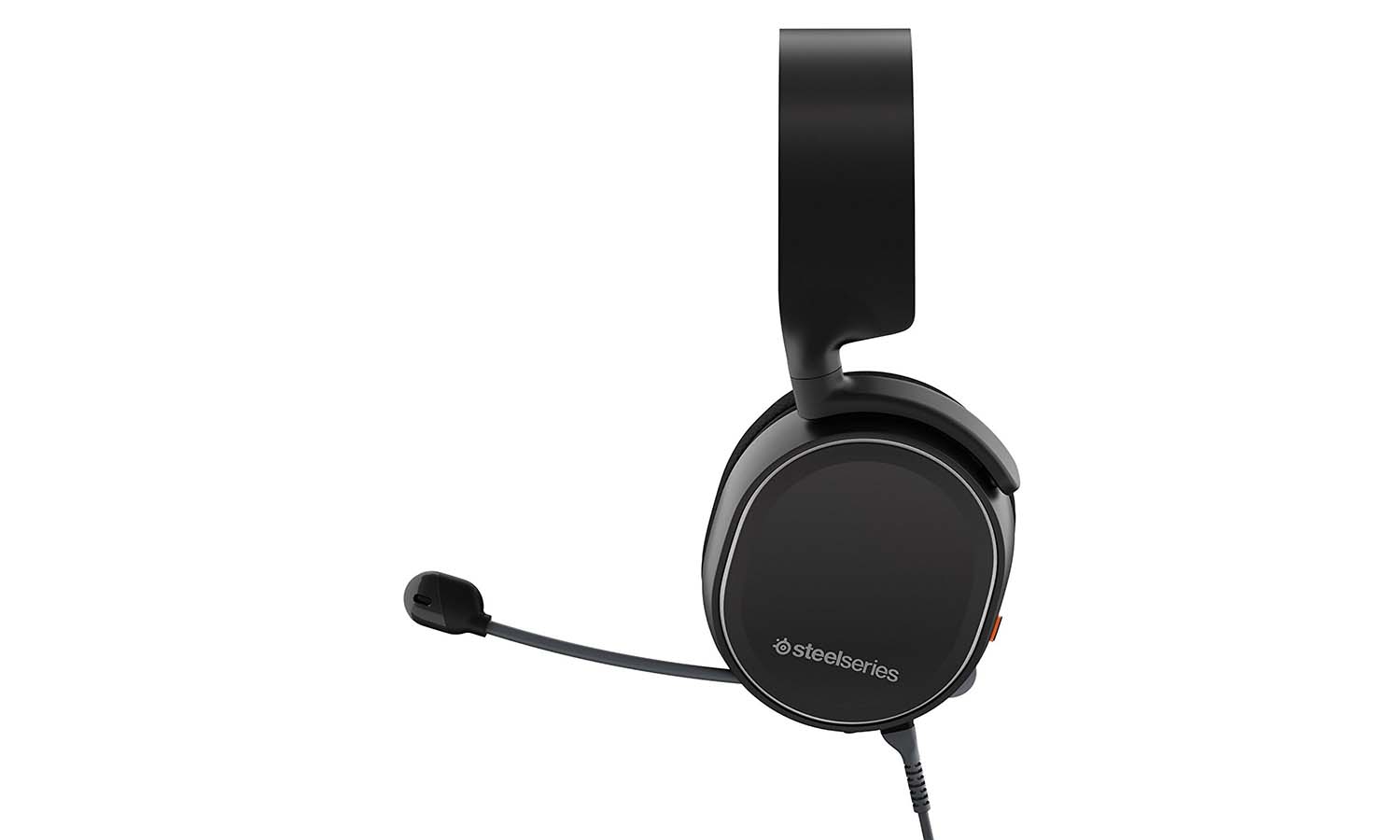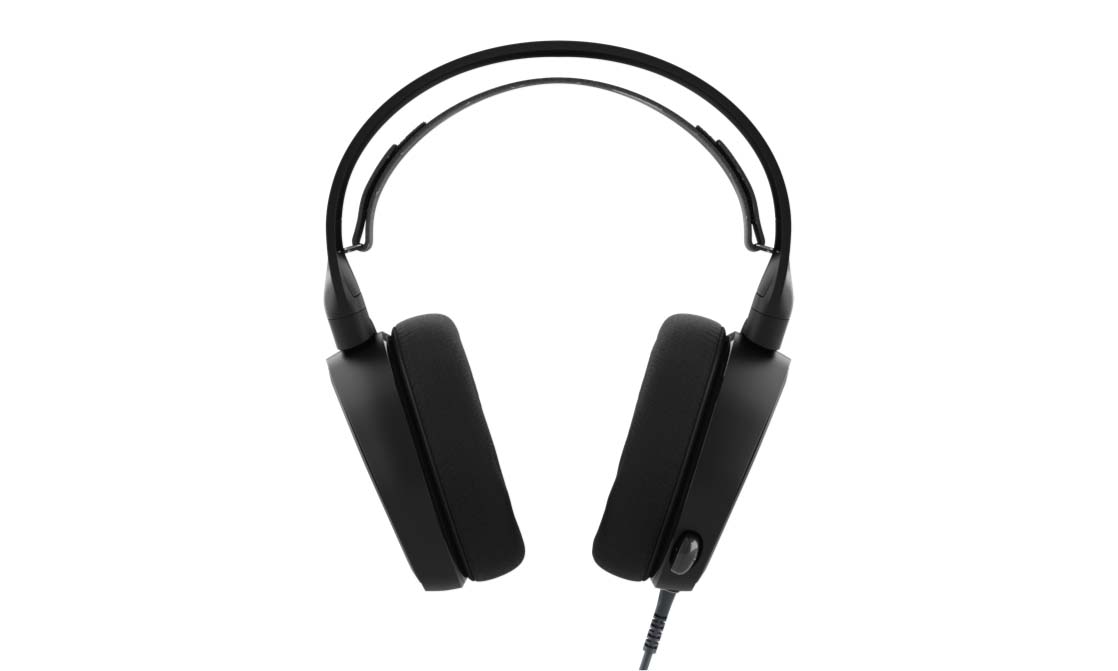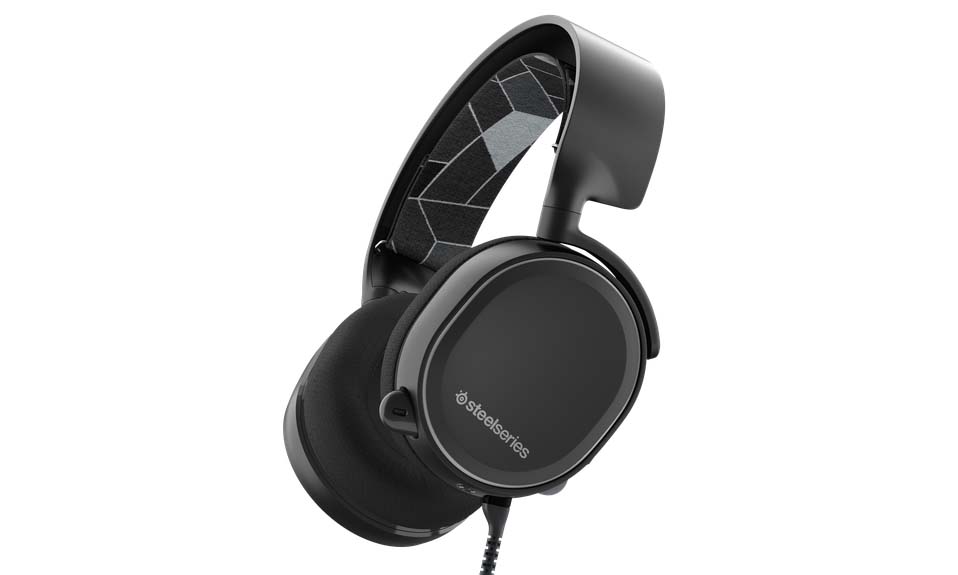Tom's Guide Verdict
The Arctis 3 is a perfectly good headset, offering high-quality sound for both gaming and music, along with a comfortable fit.
Pros
- +
Comfortable fit
- +
Good sound quality
- +
Clear mic
Cons
- -
Hard to customize
- -
Music sounds great only on PC
- -
Weakest headset in Arctis line
Why you can trust Tom's Guide
UPDATE, 6/7/19: It's also worth checking out the SteelSeries Arctis 3 with Bluetooth. It's a little more expensive, but the Bluetooth functionality adds a lot of value.
The SteelSeries Arctis 7 ($150) is probably the best wireless headset on the market; the Arctis 5 ($100) is an excellent USB headset. What role is left for the SteelSeries Arctis 3 ($80), a cheaper headset that offers only analog connections? It's not easy to say.
The Arctis 3 is a perfectly good headset, offering high-quality sound for both gaming and music, along with a comfortable fit. On the other hand, you have to jump through a number of hoops to get the most out of this headset's features, and for PC gamers especially, it's not worth the $20 savings over its USB-enabled cousin.
Design
If you know how the Arctis 5 and 7 look, you should have a pretty good idea of what you're in for with the Arctis 3. The headset is a midsize, over-the-ear model, all black, with large ear cups and a flexible fabric headband. The design is sleek and understated, and you could easily use the Arctis 3 on a plane, train or automobile without raising any eyebrows.

The left ear cup houses a volume-control wheel and a mic-mute button in the back, as well as a retractable, flexible microphone in the front. The right ear cup doesn't have anything, leaving me to wonder whether it might have been smarter to move the volume wheel there. Still, the buttons are not crowded, so there's no real problem with the layout.
Comfort
SteelSeries generally produces the most comfortable headsets in the business, and the Arctis line has been no exception. Like the 5 and 7 before it, the Arctis 3 is extraordinarily easy to wear, thanks to its flexible headband and large, plush ear cups. You don't have to grapple with rigid notches; just put it on, and the headband will take care of the rest.
I handed the Arctis 3 over to a co-worker to see if he shared my opinion, and he did, almost unequivocally. As he has a bigger head than I do, he noted that he had to adjust the headband strap. Still, since the strap is affixed with Velcro and can accommodate lots of different head shapes, this whole process took only a few seconds. He said he was especially pleased with how lightweight the headset felt, claiming that he often forgot he was wearing it at all.
MORE: The Best Headsets for Immersive Gaming
Gaming Performance
A gaming headset isn't worth much if it fails to deliver in-game, but the Arctis 3 is one of the better-sounding headsets in its price range. I tried it out with Overwatch, Heroes of the Storm, The Witcher 3: Wild Hunt and Final Fantasy XIV on the PC, as well as a handful of mobile and PS4 titles. The headset performed well across the board, and it didn't favor any particular genre.

For console and mobile games, the Arctis 3 delivers sound in a predetermined soundscape. Voice work, sound effects and music all balanced out pretty well, and I found myself perfectly immersed in whatever adventure I chose, whether I was saving a kingdom in Final Fantasy Brave Exvius on Android or exploring strange, new worlds in Star Trek Online on PS4.
On PC, I had many more options, thanks to the SteelSeries Engine 3 software, which lets you customize surround sound and equalization options for PC games. Getting just the right soundscape for each game took a fair amount of tinkering, but playing Overwatch with a performance-based surround-sound setting and The Witcher 3 with an immersive stereo setting helped highlight each game's distinctive sound design. Adventuring through the world of Eorzea in Final Fantasy XIV worked just as well as taking down online foes in Heroes of the Storm. As far as I could tell, the Arctis 3 has no weak genres.
Features
Unlike its two more-expensive variants, the Arctis 3 doesn't offer a USB connection. As such, I thought it wouldn't offer any software options, but I was wrong. If you register your headset on the SteelSeries website and link it with your account, you can indeed tweak equalization and surround-sound profiles via 3.5mm audio jack. The only problem is that you have to jump through a lot of hoops to do so.
Consider the following scenarios: If you buy a SteelSeries Arctis 5 and want to adjust your sound settings, you simply plug the headset in, open the SteelSeries Engine 3 software and go to town. If you buy a SteelSeries Arctis 3, you must plug it in, visit the SteelSeries website, create a SteelSeries account, log in to said account, input a long product code, open the Engine 3 software, log in to your account (again) and then, finally, tweak the settings, assuming you haven't succumbed to the ravages of old age first.

I would guess that the process is convoluted because it's much easier to modify a USB headset, but that still doesn't help the end user much. If you ever decide to sell your Arctis 3 or give it to a family member, the process is going to be complicated, if it's possible at all.
At least the Engine 3 software is up to its usual high standards. Creating new profiles, linking soundscapes with games and tweaking the audio options are simple, intuitive processes that don't require much time. The product registration and necessary login drags the process down somewhat — suppose you want to tweak profiles without internet access? — but under ideal circumstances, everything works well.
The mic is a high-quality model, at least, delivering rich, clear sound that puts just a little too much emphasis on S and P sounds. You could use it for just about any multiplayer game, but professional streamers may still need something with a little more oomph.
Music Performance
Music sounds pretty good on the Arctis 3, especially if you take the time to tinker with the equalization options first. I listened to tracks from Flogging Molly, Old Crow Medicine Show, the Rolling Stones and G.F. Handel, and the balance between music and vocals was appropriate, if not exactly subtle. Treble and bass balanced out nicely as well, and the headset handled every genre I threw its way.
On the flip side, having the Engine 3 software at your disposal helps a lot. When you listen to music on a mobile device, the sound quality is simply OK. Like on a lot of cheaper headsets, vocals tend to have a very forward quality, and while the bass is not terrible, you can expect to hear a lot of melody and not too much in the way of harmonies or rhythm sections.
MORE: Best Headphones - Top Rated Headphones and Earbuds
The Arctis Line
One of my biggest criticisms of the Arctis 3 is that it's simply not as good or as versatile as its counterparts. The Arctis 5 costs only $20 more and features a USB connection (in addition to the 3.5mm jack), as well as colored headset lighting. That's not incredibly useful, but there's also a light that lets you know whether the mic is active, which is much more sensible.

The Arctis 7, on the other hand, costs $150 and gets you wireless features as well. That's considerably more expensive, but everything good about the Arctis 3 is still present there, including the excellent design.
While the Arctis 7 is still a class above the Arctis 3, it doesn't make much sense to pocket only $20 in savings by avoiding the 5, which presents a much more compelling option.
Bottom Line
The SteelSeries Arctis 3 is a good headset. It's not a great headset; that honor is reserved for the Arctis 5and 7. It's one of the better options in the $80 range — noticeably better than the Kingston HyperX Cloud II, for example — but its obtuse software setup and just-pretty-good music performance hold it back.
If you want to keep your gaming setup as minimalist as possible, the Arctis 3 is a perfectly good choice for PCs, consoles and mobile devices. If you can spare the extra $20, though, take the plunge for the Arctis 5. Your computer's USB port will thank you.
Marshall Honorof is a senior editor for Tom's Guide, overseeing the site's coverage of gaming hardware and software. He comes from a science writing background, having studied paleomammalogy, biological anthropology, and the history of science and technology. After hours, you can find him practicing taekwondo or doing deep dives on classic sci-fi.

